“Wall” or “Duct” — That Is the Question. How to Classify KWP-P-E Baffle Mounted Fire Ventilation Damper?
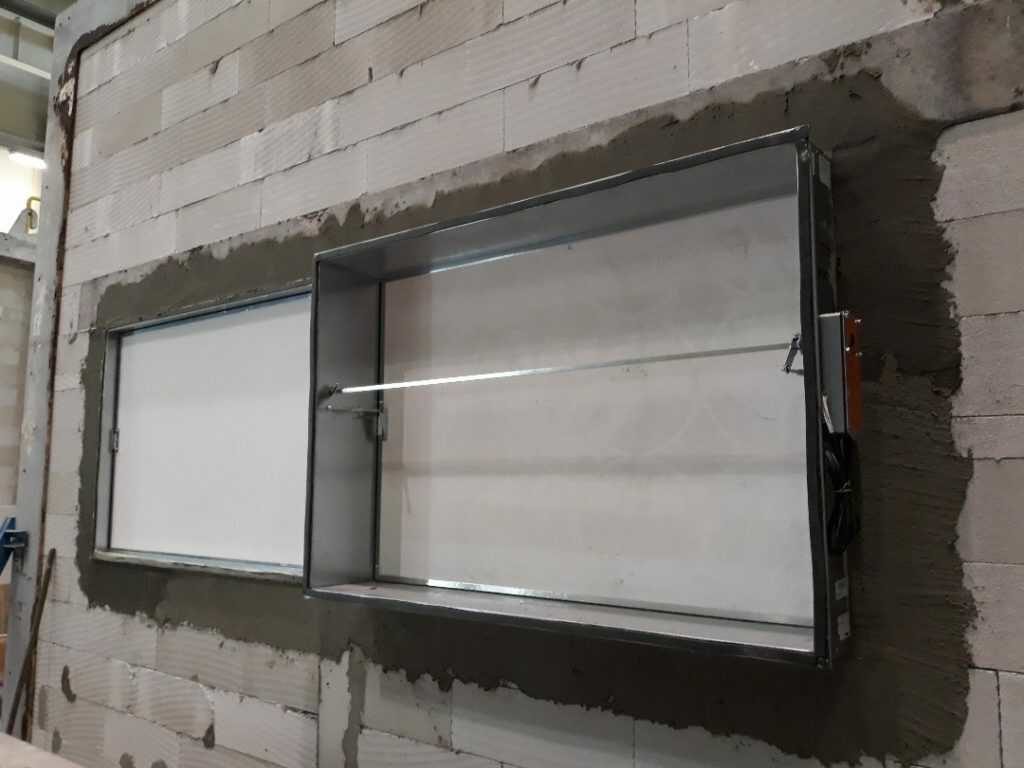
SMAY’s business profile is not only the production and sales, but also broadly defined technical support for designers, architects and engineering companies. Together with our partners we carry out technical analyses of designed and already existing smoke extraction systems. In such situations we see how hard it is to interpret the legislation on the fire ventilation damper classification.
The most discussed subject is the correctness of the following statement:
“The dampers are mounted in a masonry wall, and therefore the correct classification is »w« (wall)”.
In reality, fire dampers in smoke control systems may be mounted in identical baffles, but may be classified in one of the two following categories:
• in/on a duct — “d”,
• in a baffle — “w”.
Fire ventilation damper — installation
According to the requirements of PN-EN 1366-10 research standard, the decisive factor for the classification choice for a fire damper mounted in a given location is the function of the damper (e.g., its insulating power, underpressure value, vertical/horizontal installation), and not the mere fact of installation in a wall.
In response to your suggestions, below we present two diagrams which illustrate installation of a smoke extraction system in a building. In both cases KWP-P dampers are mounted in a masonry wall. Nevertheless, in the first case the damper is classified as “d” (“duct”) and in the second case as “w” (“wall”).
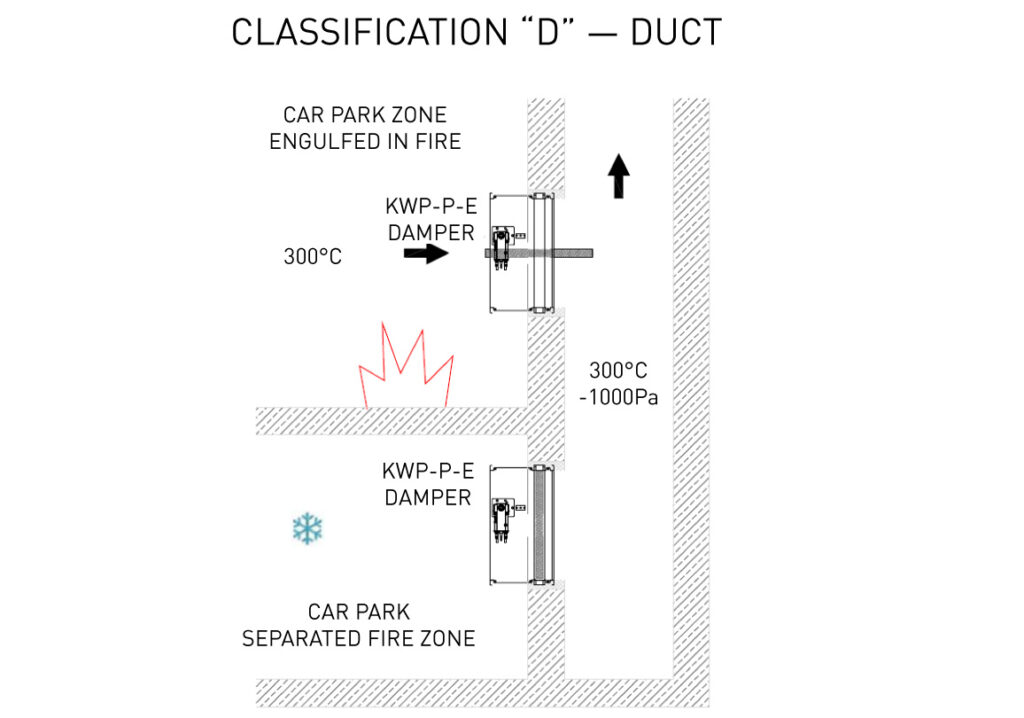
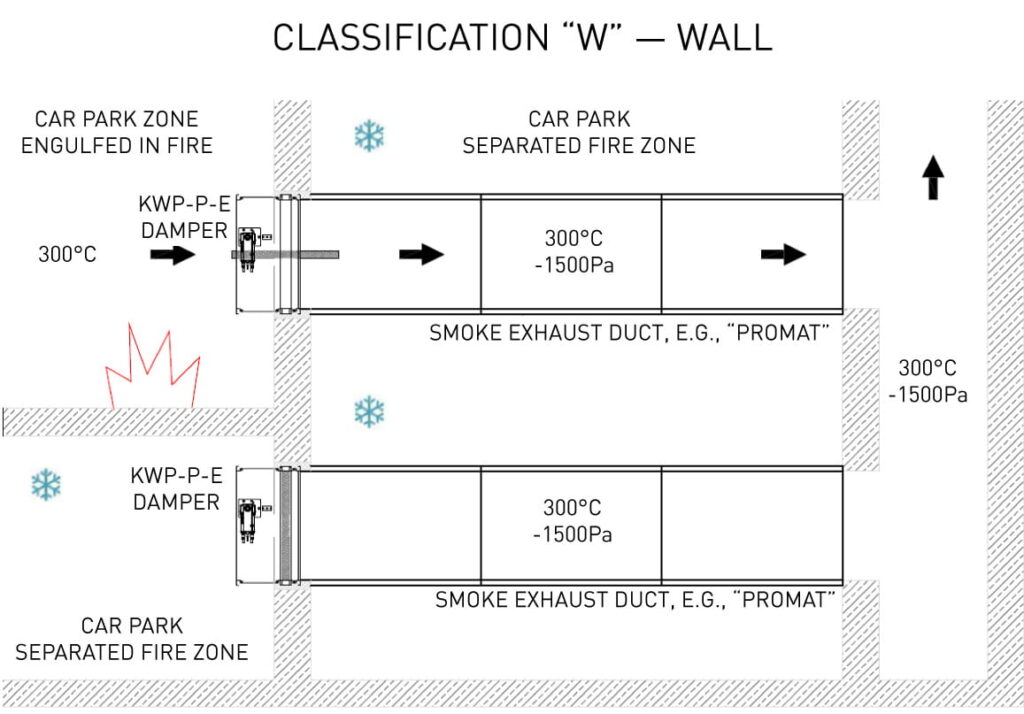
KWP-P-E dampers shown IN the diagrams should be — depending on the conditions — classified in the following categories:
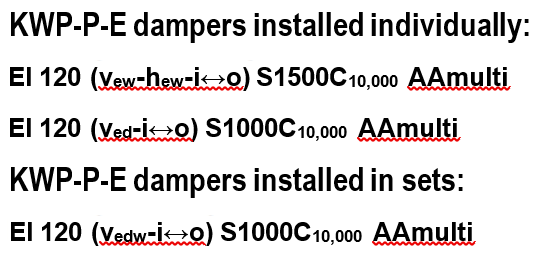
Below we present suggestions for installation of KWP-P dampers according to the established classification.
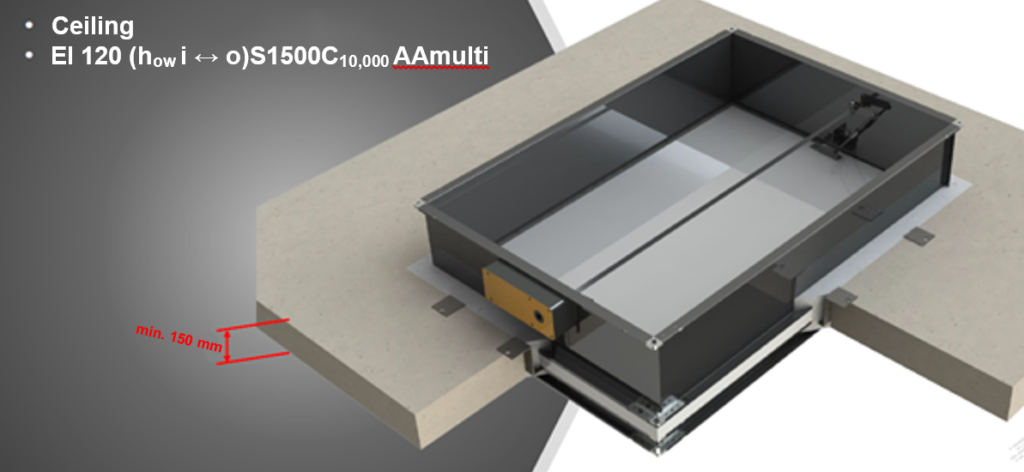
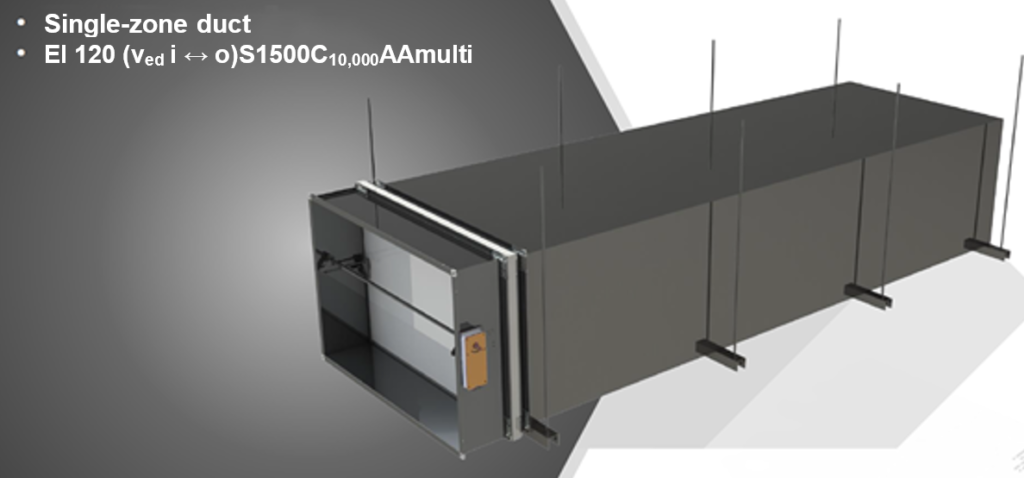

Autor

Rafał Polichnowski
Deputy Commercial Director



